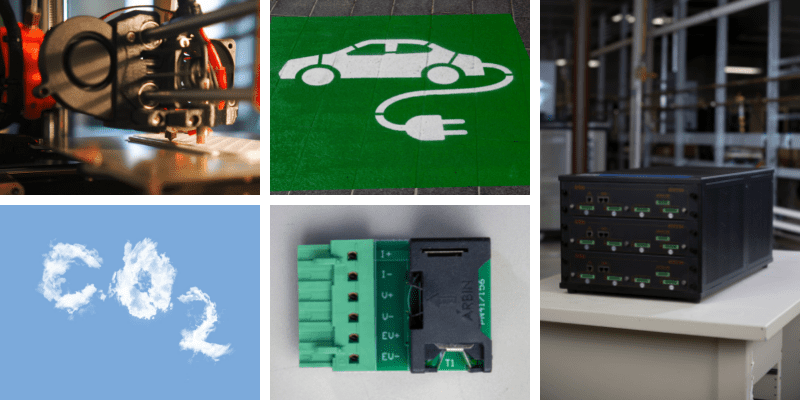
Battery technology is ever evolving as research and development into different materials, configurations, and designs bring new insights and breakthroughs. As the world moves towards green energy, batteries play an important role in powering the future. Be it consumer devices like smartphones or laptops, or electric vehicles and grid storage, battery technology is essential.
It can be years from when a breakthrough is made until it becomes commercially viable. During the period of maturing, more discoveries could potentially change the game. Arbin Instruments has been a long-standing participant in battery research, providing high quality, high precision battery test equipment to support research and development in various ways. Here are three technologies that could make an impact on the future of battery performance.
Maturing solid-state batteries
Solid-state batteries (SSB) have been in the game for a while. The appeal of this technology is that it replaces the flammable liquid electrolyte within current batteries with a solid alternative, mitigating the fire risk. However, over the years there have been many obstacles to overcome in order to design a viable version of the battery. These include issues like interface between electrodes and electrode degradation. Because of its solid form, ions within an SSB cannot move as freely between the anode and cathode as within its liquid counterpart, and they tend to degrade too rapidly for long cycle life applications.
These issues are gradually being addressed. Sakuu Corporation recently announced an industrial 3D printer that could mass produce solid-state batteries for smaller electric vehicles, technology that can be easily scaled up for larger applications. This simplifies the manufacturing process and lowers costs of SSBs, and could be applied to existing or new materials.
Other companies have also been exploring ways to deliver more seamless ways to transition to solid-state alternatives. Natrion, a battery research startup, recently announced a high-performance, flexible, and durable solid electrolyte film. The company designed the component in a way that is easily compatible with current lithium-ion battery manufacturing processes, so that manufacturers can rapidly transition their production lines into adopting this technology, without changing the entire process. This also helps to lower production costs and reduces concerns around complete revamps of production lines.
Non-lithium batteries
There are a multitude of material and chemical combinations that can comprise batteries. Different configurations change the efficiency, capacity, and stability of a battery. Most common batteries nowadays use lithium, with nickel, cobalt, and manganese among others to make up different battery components. Many researchers are investigating materials like air or silicon that can be combined with lithium removing more toxic metals like cobalt from the battery.
However, there is also research into batteries that do not use lithium. One such example is a CO2 battery. Startup company Noon Energy has been exploring a low-cost rechargeable battery that uses carbon and oxygen and is eyeing this as a solution for grid-scale storage. As renewable energy is adopted more and more, larger and more efficient storage solutions need to be developed to ensure a reliable amount of energy is stored for use. They favor the use of CO2 as it is abundant, cheap, and energy efficient.
How Arbin can support battery research

Arbin continuously innovates to support battery research. For instance, Arbin commercialized a three-electrode “3E” coin cell design developed and patented by General Motors. The extra reference electrode allows researchers to evaluate both the positive and negative electrodes simultaneously during cell testing. This helps to reduce time and cost during the research process.
The Arbin multichannel potentiostat/galvanostat system (MSTAT) provides independent potentiostat/galvanostat channels that each have a built-in connection for such three electrode cells, and supports both coin cell and pouch formats. The accompanying “3E” cell holders can be plugged directly into the MSTAT channels for testing.
The MSTAT can be used with a wide range of battery chemistries and provides best in class performance with 24-bit resolution and precision better than 40ppm. Arbin can help researchers identify which electrode in the battery is the limiting factor faster than ever before!
Various modules that can be added onto Arbin systems can also support battery testing and materials research. The EIS module is an integrated solution that combines the battery test performance of Arbin with the advanced EIS capability of Gamry, allowing users to share up to 32 Arbin tester channels with a single Gamry EIS unit.
Innovation is an ecosystem. Advances in battery test equipment and tools help lead to new findings and expediting the R&D process. High quality battery testing technology can support materials research in order to explore new chemistries that could lead to the next generation of high-density energy storage devices. Although the process of research and development can be long and arduous, there are many breakthroughs big and small happening all the time. All these, together, lay the foundation for the technology and world that we will experience in the near future.


